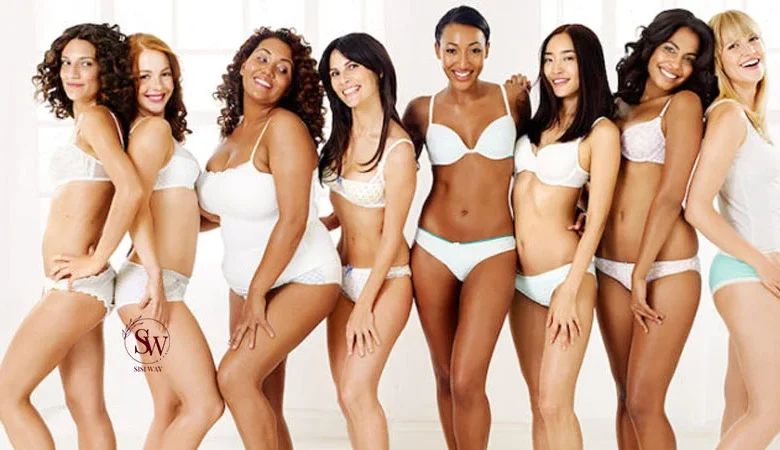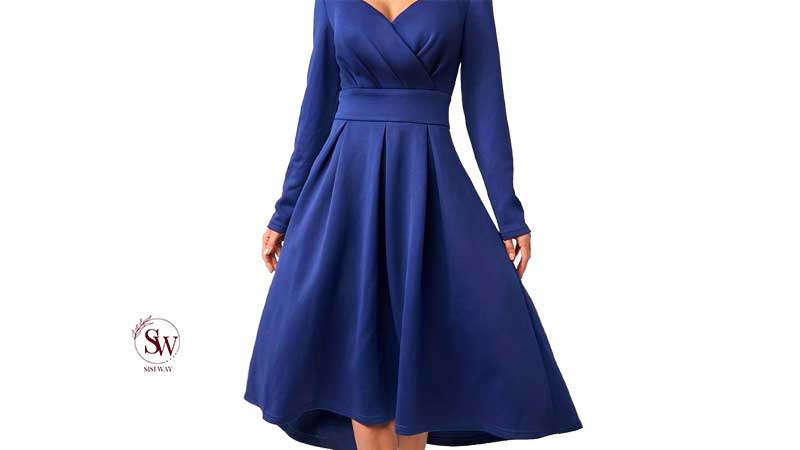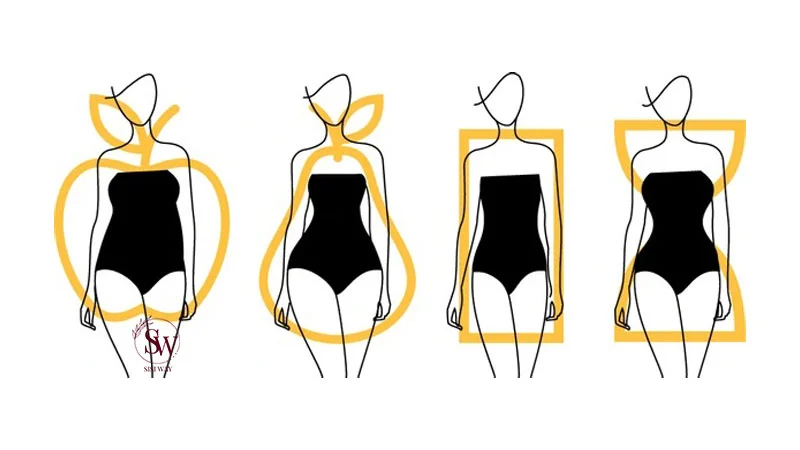
In a world that celebrates diversity, it’s crucial to recognize and appreciate the uniqueness of every individual. One aspect of diversity that often goes unnoticed is the variety of body shapes that people naturally possess. This article by Sisiway aims to shed light on the different types of body shapes, emphasizing the beauty and individuality each shape brings. Let’s explore the science behind body shapes, their characteristics, and how to embrace and celebrate diversity.
The Science of Body Shapes
To understand body shapes, it’s essential to grasp the underlying science. Genetics plays a significant role in determining an individual’s body shape, influencing factors such as bone structure, distribution of fat, and muscle mass. Hormones also contribute to body shape, affecting fat storage and muscle development.
Apple Shape:
- Characteristics: The apple-shaped body tends to carry weight around the midsection, with a broader upper body and narrower hips.
- Health Implications: Apple-shaped individuals may have a higher risk of cardiovascular issues due to abdominal fat accumulation.
- Tips: Focus on core exercises and balanced nutrition to promote overall health.
Pear Shape:
- Characteristics: Pear-shaped individuals typically have narrower shoulders and a smaller bust, with weight accumulating in the hips and thighs.
- Health Implications: Pear-shaped bodies may have a lower risk of cardiovascular issues but may face challenges with lower body joint health.
- Tips: Incorporate cardio exercises and strength training for both the upper and lower body.
Hourglass Shape:
- Characteristics: The hourglass body shape features a well-defined waist with balanced upper and lower body proportions.
- Health Implications: While hourglass figures are often considered ideal, maintaining overall health is crucial.
- Tips: Engage in a well-rounded fitness routine, focusing on maintaining muscle tone and cardiovascular health.
Rectangle Shape:
- Characteristics: The rectangle body shape has similar measurements for shoulders, waist, and hips, lacking pronounced curves.
- Health Implications: Individuals with a rectangular shape may benefit from exercises that enhance muscle definition.
- Tips: Incorporate strength training to create curves and maintain a healthy lifestyle.
Dressing for Your Body Shape:
Understanding your body shape is instrumental in choosing clothing that enhances your natural features. Embrace your unique proportions and experiment with styles that highlight your strengths.
a. Apple Shape:
- Focus on drawing attention away from the midsection by opting for V-neck tops and dresses.
- Embrace A-line dresses and empire-waist tops to create a balanced silhouette.
- Choose bottoms that elongate the legs, such as bootcut or straight-leg pants.
b. Pear Shape:
- Highlight the upper body with statement tops and structured jackets.
- Opt for A-line skirts and wide-legged pants to balance the proportions.
- Draw attention to the waist with belts or high-waisted bottoms.
c. Hourglass Shape:
- Emphasize the well-defined waist with fitted clothing.
- Wrap dresses and peplum tops are excellent choices for showcasing curves.
- Choose tailored pieces that follow the natural contours of your body.
d. Rectangle Shape:

- Create the illusion of curves with peplum tops and ruffled or embellished details.
- Experiment with high-waisted bottoms and belts to define the waist.
- Choose dresses with added volume in the bust or hips for a more hourglass appearance.
Body Positivity and Mental Health:
In a society that often imposes unrealistic beauty standards, it’s crucial to promote body positivity. Accepting and loving your body shape contributes to better mental health and self-esteem. Surround yourself with positive influences that celebrate diversity in all forms.
Fitness and Nutrition Tailored to Your Body Shape:
Rather than striving for a one-size-fits-all approach to fitness, tailor your exercise and nutrition routine to complement your body shape. Seek professional guidance to create a personalized plan that aligns with your unique characteristics.
Frequently Asked Questions:
- Can I change my body shape through exercise?
While you can enhance certain aspects of your body through exercise, genetics play a significant role in determining your natural body shape. - Are certain body shapes more prone to health issues?
Each body shape comes with its own set of health considerations. It’s crucial to focus on overall health rather than conforming to societal beauty ideals. - Is there an ideal body shape?
No, there is no one-size-fits-all ideal body shape. Embrace and celebrate your unique body, recognizing that diversity is what makes us all beautiful.
Conclusion:
Understanding and appreciating different types of body shapes is a step toward fostering a more inclusive and accepting society. Embrace your natural body shape, celebrate diversity, and prioritize overall health and well-being. Remember, beauty comes in all shapes and sizes.




